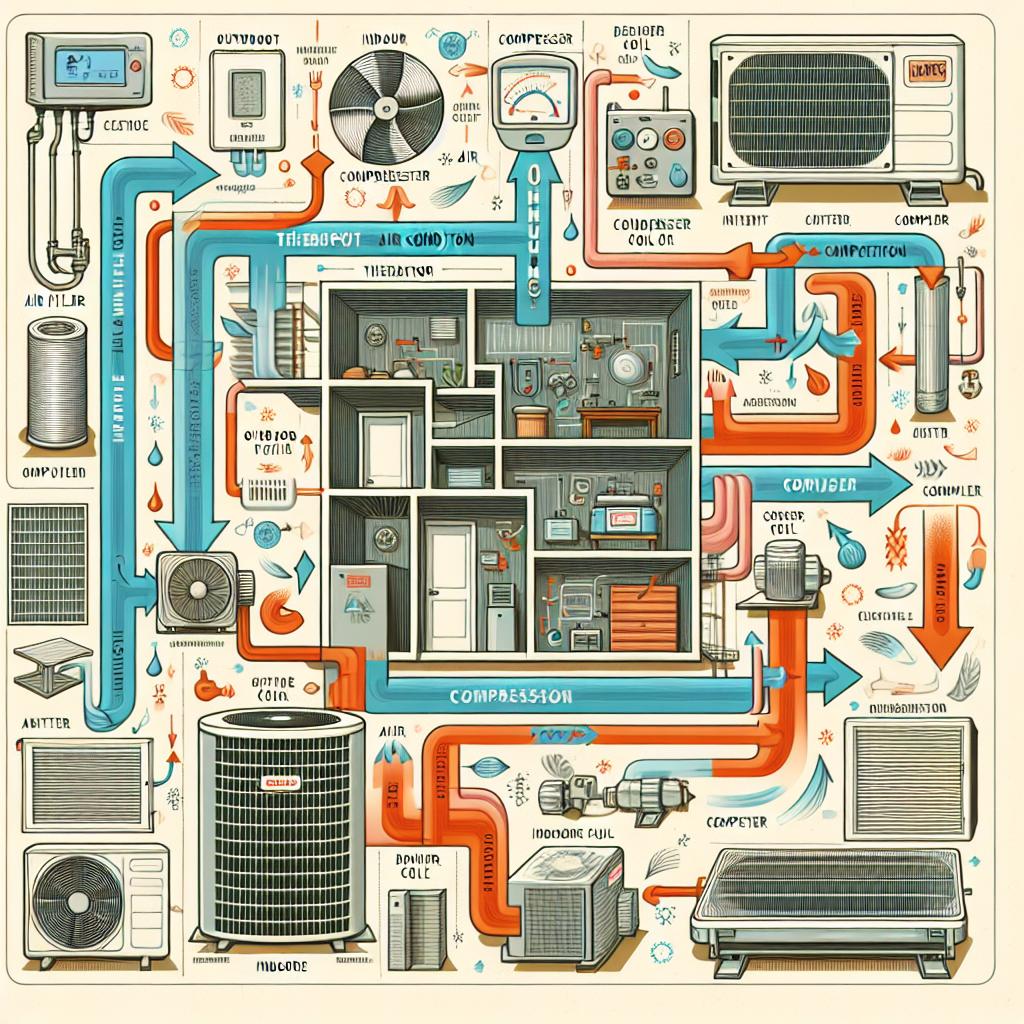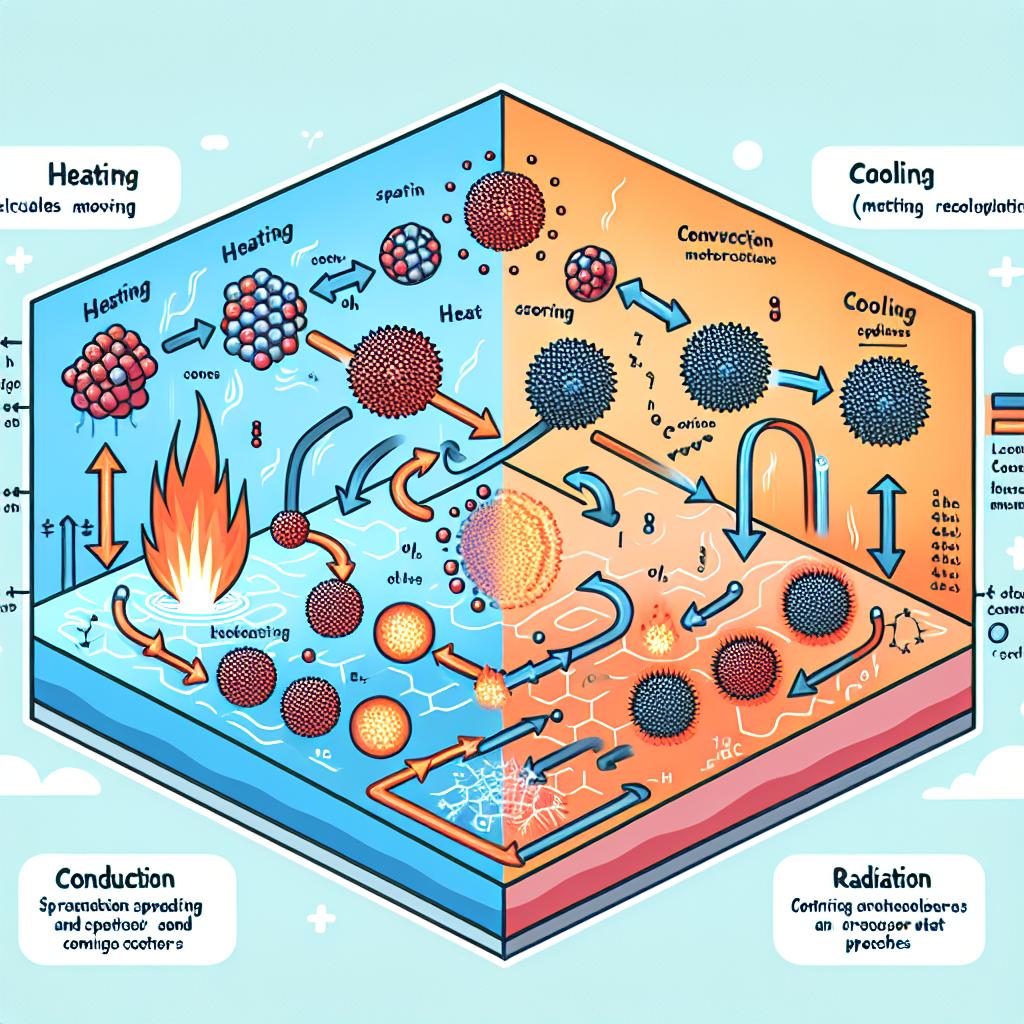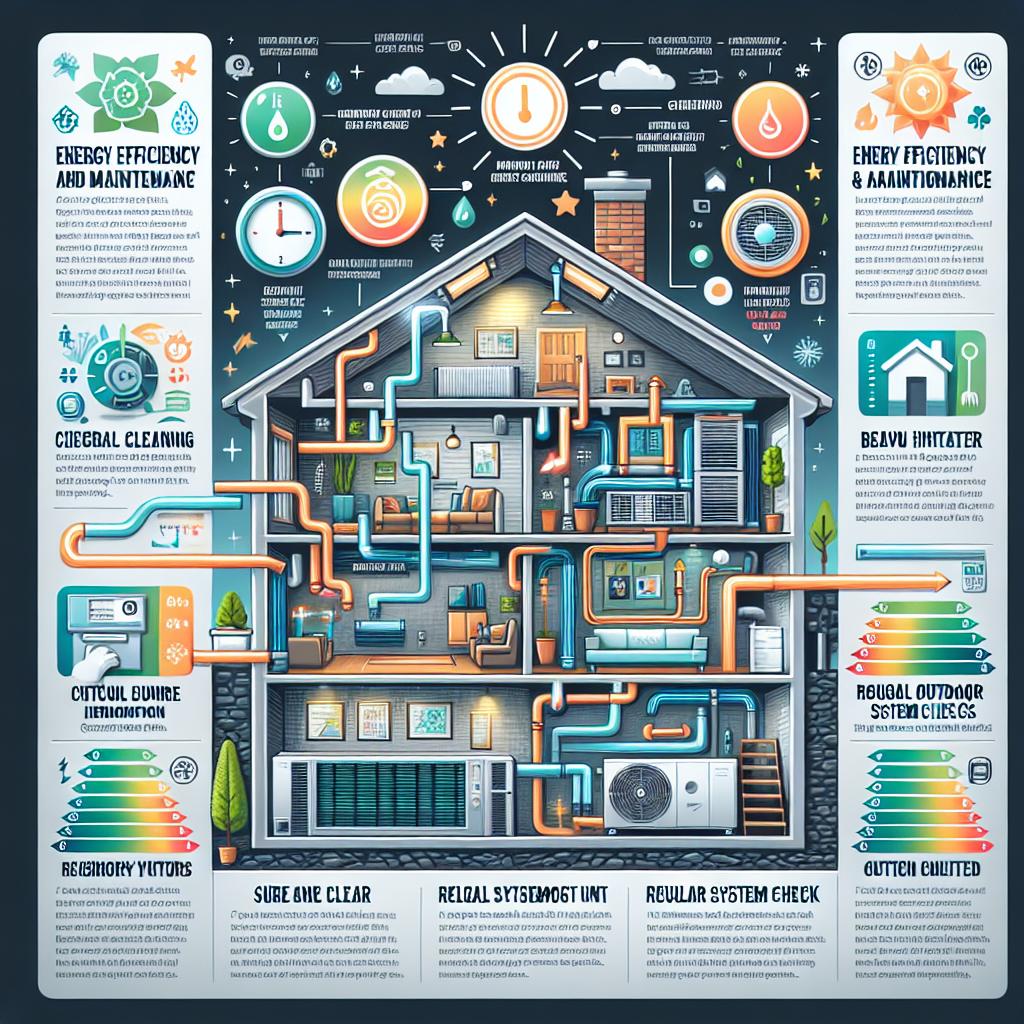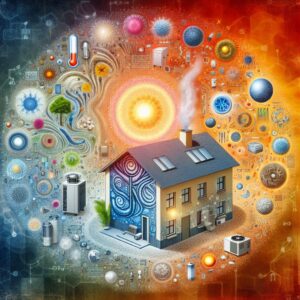Understanding HVAC Systems: The Unsung Heroes of Comfort
Imagine stepping into your home after a long day, greeted not by the sweltering heat of a summer afternoon or the biting chill of winter’s grip, but by a perfectly tempered oasis tailored just for you. Behind this seamless comfort lies a complex network of technology known as HVAC—Heating, Ventilation, and Air Conditioning. Although they often operate quietly in the background, these systems play a crucial role in maintaining the ideal indoor climate, optimizing air quality, and promoting energy efficiency. In this article, we will demystify the fundamental principles of HVAC systems, exploring how they work, the components that make them function, and their impact on our daily lives. Join us on a journey through the mechanics of temperature control, where comfort meets innovation.
Understanding the Components and Functionality of HVAC Systems
At the heart of air conditioning, heating, and ventilation lies a complex interworking of components that ensures optimal comfort and air quality within indoor environments. Key elements include the thermostat, which acts as the control center, regulating temperature settings. The furnace or boiler generates heat, while the air conditioner cools and dehumidifies the air. These systems operate through a series of ducts, which distribute conditioned air throughout a building. Additionally, the filter functions to trap dust and particulates, promoting better indoor air quality. It’s essential for users to regularly check and replace this component to maintain efficiency.
Understanding the functionality of these systems can motivate homeowners to make informed decisions about their heating and cooling needs. The immediate goal of an HVAC system is to create a comfortable indoor environment, which is achieved through the interplay between various functions: heating, cooling, ventilation, and air filtration. Here’s a simple overview of the different components and their respective roles:
| Component | Function |
|---|---|
| Thermostat | Controls the temperature and settings |
| Furnace/Boiler | Heats the air or water for circulation |
| Air Conditioner | Cools and dehumidifies ambient air |
| Ducts | Distributes heated or cooled air |
| Filter | Removes contaminants from the air |

The Role of Thermodynamics in Heating and Cooling Processes
Thermodynamics serves as the backbone of all heating and cooling processes, playing a pivotal role in the efficiency and effectiveness of HVAC systems. The first law of thermodynamics, which states that energy cannot be created or destroyed, only transformed, is integral in understanding how these systems function. For instance, when an HVAC unit heats air, it takes in energy from a heat source and transfers it to the air being circulated, while in the cooling process, it extracts heat from the indoor air and expels it outside. This energy transfer is governed by several principles, including temperature, pressure, and volume, all of which influence the behavior of refrigerants within the system.
Additionally, the second law of thermodynamics introduces the concept of entropy, emphasizing the natural progression of energy towards equilibrium. Within HVAC systems, this defines how heat moves from warmer areas to cooler ones, necessitating efficient designs that minimize energy loss. Engineers utilize this understanding to innovate in areas such as:
- Insulation materials that maintain temperature control
- Variable speed fans to optimize airflow
- Smart thermostats that reduce energy consumption based on real-time needs
| Thermodynamic Principle | Description |
|---|---|
| First Law | Energy conservation; transformations are key to HVAC operation. |
| Second Law | Heat naturally flows from hot to cold, necessitating effective energy management. |

Energy Efficiency and Maintenance Tips for Optimal HVAC Performance
To ensure your HVAC system operates at its best, regular maintenance is crucial. Simple tasks such as replacing air filters every 1-3 months help maintain airflow and improve energy efficiency. Additionally, consider scheduling a professional tune-up at least once a year to inspect and clean key components like the compressor, evaporator coil, and ductwork. These preventative measures not only enhance performance but can also extend the lifespan of your system.
Energy efficiency can be further optimized by adopting a few smart habits. Setting your thermostat to a reasonable temperature can lead to significant energy savings. Consider these tips for an efficient program:
- Set your thermostat higher in summer and lower in winter.
- Use ceiling fans in conjunction with your HVAC system.
- Seal any gaps in windows and doors to prevent air leaks.
Moreover, investing in a programmable thermostat will allow you to automate temperature adjustments, ensuring your system doesn’t work harder than necessary when you’re not home.

Common Troubleshooting Issues and How to Resolve Them
Even the most advanced HVAC systems can occasionally run into issues that may disrupt your comfort. One common problem is the system failing to cool or heat your space adequately. This can often be traced back to dirty air filters, which restrict airflow and impede the efficiency of the unit. Regularly replacing or cleaning air filters every one to three months can significantly enhance performance. Other factors such as blocked vents or ducts can also hinder airflow. Ensure that all vents are unobstructed and regularly maintained to allow for optimal operation.
Another frequent issue is when the system constantly cycles on and off, known as short cycling. This may be caused by an improperly sized system for your home. If the HVAC unit is too large, it will cool or heat the space too quickly without adequately removing humidity, causing it to turn on and off frequently. Additionally, malfunctioning thermostats can lead to inaccurate temperature readings and result in short cycling. Checking thermostat settings, recalibrating, or replacing outdated thermostats can improve system behavior, ensuring a more consistent and comfortable environment.
Q&A
Q&A: Understanding How HVAC Systems Work
Q1: What does HVAC stand for?
A1: HVAC stands for Heating, Ventilation, and Air Conditioning. It’s a comprehensive system designed to maintain comfortable indoor temperatures and air quality throughout the year.
Q2: How do HVAC systems achieve temperature control?
A2: HVAC systems employ a series of components to regulate temperature. In winter months, furnaces or heat pumps generate warmth, while in summer, air conditioners or chillers cool the air. Thermostats play a pivotal role, sensing the indoor temperature and signaling the HVAC components to turn on or off as needed.
Q3: Can you explain the role of ventilation in an HVAC system?
A3: Absolutely! Ventilation is crucial for bringing fresh air into a building and removing stale air. It helps maintain indoor air quality by controlling humidity and diluting indoor pollutants. This is accomplished through ductwork, fans, and sometimes even natural ventilation methods like windows.
Q4: What is the difference between central and decentralized HVAC systems?
A4: Central HVAC systems distribute conditioned air throughout the entire building using a network of ducts, making them ideal for larger spaces. Decentralized systems, on the other hand, operate independently in each room or area (think window units or mini-splits), which can be more energy-efficient and flexible for smaller spaces.
Q5: How does air conditioning work?
A5: Air conditioning works by removing heat from the indoor air and transferring it outdoors. This process involves the refrigeration cycle, wherein refrigerant circulates between the indoor and outdoor units, absorbing heat from inside and expelling it outside, thereby cooling the indoor environment.
Q6: Are there different types of heating methods in HVAC?
A6: Yes, there are several! Common heating methods include furnaces (which burn fuel to heat air), heat pumps (which transfer heat from outside to inside), and radiant floor heating (which warms surfaces directly). Each method has its own advantages depending on climate and individual needs.
Q7: How do energy efficiency ratings impact HVAC systems?
A7: Energy efficiency ratings, such as SEER (Seasonal Energy Efficiency Ratio) for air conditioners and AFUE (Annual Fuel Utilization Efficiency) for furnaces, indicate how effectively a system converts energy into heating or cooling. Higher ratings mean better efficiency, which can translate to lower energy bills and a reduced environmental impact.
Q8: What maintenance does an HVAC system require?
A8: Regular maintenance is key to keeping HVAC systems running efficiently. This includes changing air filters, cleaning coils, checking refrigerant levels, and scheduling professional inspections at least once a year. Regular upkeep can prevent breakdowns and extend the lifespan of the system.
Q9: What should I consider when choosing an HVAC system for my home?
A9: Factors to consider include the size of your space, climate, energy efficiency ratings, budget, and your specific comfort needs. It’s also wise to consult a professional to ensure that the system is appropriately sized and designed for your home.
Q10: How can I improve the efficiency of my HVAC system?
A10: You can boost efficiency by sealing leaks in ducts, insulating your home, using programmable thermostats to better control heating and cooling, and regularly maintaining your system. Additionally, consider upgrading to energy-efficient models that can save you money in the long run.
This Q&A serves as a beginner’s guide to understanding the complexities of HVAC systems. Whether you’re a homeowner or simply curious, knowing how these systems function can empower you to make informed decisions about your indoor climate.
Closing Remarks
As we draw the curtain on our exploration of HVAC systems, it becomes clear that these intricate networks of technology and engineering play a pivotal role in our daily comfort and well-being. From the chill of summer air conditioning to the warm embrace of winter heating, HVAC systems are the silent guardians of our indoor environments, ensuring we breathe easy and live comfortably.
Understanding how these systems operate not only demystifies the processes at play but also empowers us to make informed choices about energy efficiency and maintenance. As we continue to innovate and advance in the realm of climate control, the future holds exciting possibilities for enhanced comfort and sustainability.
So, whether you’re a homeowner seeking optimal efficiency or simply curious about the mechanics of modern living, remember that behind every breath of fresh air and cozy corner in your home, there exists a world of science and technology, transforming the ordinary into the extraordinary. Stay cool, stay warm, and appreciate the marvel that is your HVAC system.

